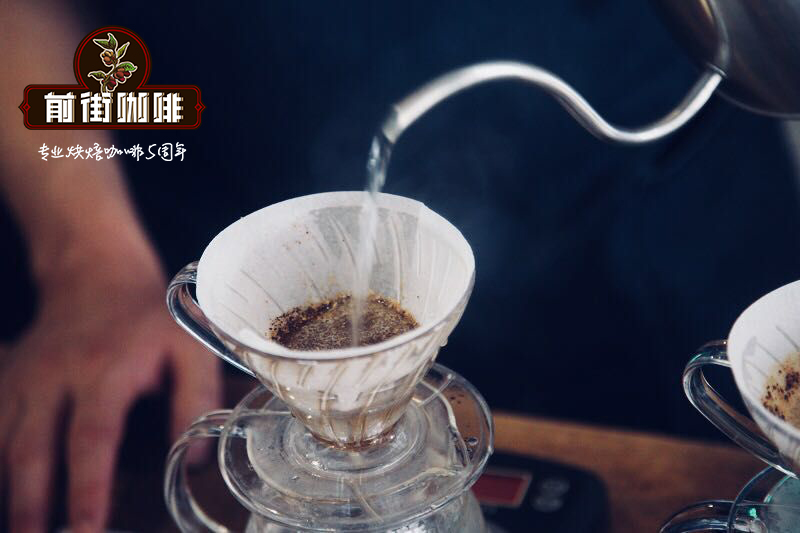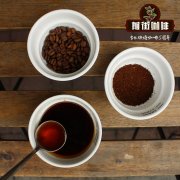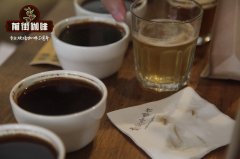AA of Bali Congo treatment Plant in Chiambu, Kenya

Professional coffee knowledge exchange more coffee bean information please follow the coffee workshop (Wechat official account cafe_style)
Qianjie Coffee individual Coffee recommendation | Kenya AA Asali
Products: 1800 meters above sea level, AA grade, Bali Congo treatment Plant, Chiambu, Kenya.
(Kenya AA Kiambu Barikongo 1800m)
Flavor description: raisins, plums, dark plum notes, vanilla chocolate
Fresh Cunninghamia lanceolata, thick taste.
Country of origin: Kenya (Kenya)
Producing area: Kiambu town
Producer: Bali Congo processing Plant (Barikongo)
Varieties: SL28, SL34
Altitude: 1800 m
Grade: AA Kenyan washing
Harvest: Nipple A
Recommended baking degree: medium and shallow baking, if you want to develop more flavor and make beans look better, it is recommended to prolong the dehydration time before turning yellow, add heat to a dense explosion after turning yellow, and then reduce the fire to develop the taste.
Introduction:
The Bali Congo processing Plant (Barikongo) is located near the town of Kiambu, north of the Kenyan capital Nairobi.
This producing area is very old and famous, and it continues the technology of coffee cultivation and production management in the colonial era.
This treatment site belongs to the largest Qianbu cooperative (the Cooperative Society of Kiambu) in Qianbu town.
One of its water treatment plants, the list of all water treatment plants in this cooperative is as follows: Riakahara, Barikongo
Kagwanja, Kirura, Korokoro, Githongo, Thiururi, Kaibu, New Thuita
There are 12 water treatment plants in Kanake and Gatuyu and Kamuchege. Every water treatment plant provides services.
Members of nearby coffee farmers are targeted, so each water treatment plant is distributed in the town of Kiambu.
Every corner. This producing area produces high-quality coffee because of its high altitude, fertile soil and natural climate.
More than 55% of Kenyan coffee is grown by these small coffee farmers and is organized into tribes or villages.
Collective cooperatives, the responsibility of cooperatives will assist members to handle raw beans through its water treatment plants.
Grading, drying and packaging, naming production batches, and then waiting to be sent to the capital Nairobi for weekly meetings.
There are 51, 000 small coffee farmers in the Cooperative Society of Kiambu.
Member, established in the 1990s, is a second-level cooperative composed of 22 places, by the local government of Qianbu town.
Leading and setting up a large joint main cooperative, the main work of the Qianbu town government is coffee affairs and assistance.
The cooperative handles the size of its members. Coffee was first introduced into Kenya in the 1880s by France.
Missionaries are mainly planted around the town of Chiambu, which is in the foothills north of the capital Nairobi, in central Kenya.
Located in Kiambu,Kirinyaga, Murang'an and Nyeri and other four places, the output is the largest in Kenya.
The output is about 49000 metric tons, accounting for 70% of the national output. Machakos ranks second in the east and 70% in the west.
Bungoma is followed by little production in other areas, which shows the importance of coffee in Kiambu to Kenya.
In 1930, the unique Kenyan varieties SL28 and SL34 were cultivated and named by "Scott Laboratories" laboratory.
It was born in such a good research environment. According to botanists in the SL lab, SL28 and SL34
It's a genetic variant. SL28 has a mixed pedigree of French missionaries, mocha and Yemeni Tibica.
The goal of cultivating SL28 was to mass produce coffee beans with high quality and resistance to diseases and insect pests.
Although the output of SL28 was not as large as expected, the copper leaf color and broad bean-shaped beans were very good.
Sweetness, balance and complex flavor, with remarkable citrus and black plum characteristics. While SL34 and SL28
The flavor is similar, except for the complex and changeable acidity, and the great sweet finish, the taste is heavier than SL28.
Full-bodied and cleaner. SL34 has more Tibica lineages than French missionaries, bourbon, and Tibica.
Dou looks similar to SL28, but is more adaptable to sudden heavy rain. That is, these two important varieties.
Lead us to the unique Kenyan style: strong and rich acidity, full-bodied taste and beautiful balance.
Raw beans are mainly treated by washing, graded according to particle size, and determined by cup measurement.
Real value. The highest grade coffee beans are AA (large granulated beans left on the 7.2mm sieve), A
(second largest granulated beans left on 6.8mm sieve), B grade (medium sized granulated beans left on 6.2mm sieve),
Grade C (all small granulated beans less than B), PB (oval granulated beans), and too light and too small TT
And T-grade beans. Grade An and B beans are mixed and exported, called AB. Kenyan authorities (CBK) on coffee beans
People who love coffee because of their high requirements, consistent packaging, good quality and good texture.
Never forget to enjoy a cup of Kenyan coffee.
Qianjie coffee: Guangzhou bakery, the store is small but a variety of beans, you can find a variety of unknown beans, but also provide online store services. Https://shop104210103.taobao.com
Important Notice :
前街咖啡 FrontStreet Coffee has moved to new addredd:
FrontStreet Coffee Address: 315,Donghua East Road,GuangZhou
Tel:020 38364473
- Prev

Kenya AA | Chianbu production area | 3G processing Plant | SL28/SL34
Professional coffee knowledge exchange more coffee bean information please follow the coffee workshop (Wechat official account cafe_style) front street coffee individual coffee recommendation | Kenya AA Asali Kenya Kiambu 3GS AA Kenya AA Chiambu 3G processing factory flavor description: blackcurrant mixed with some blueberries, orange juice-like acidity, taste thick and full, caramel aftertaste located in East Africa
- Next

First place in the 2017 Ecuador Gold Cup | Jet Manor | Kaddura, a small farmer in Servio, washed.
Professional coffee knowledge exchange more coffee bean information please follow the coffee workshop (Wechat official account cafe_style) front street coffee individual coffee recommendation | Costa Rica Shumawa black honey | Costa Rica Angel Manor Sun name: 2017 Ecuador Gold Cup No. 1 Jet Manor Servio small farmer Kaddura washing (Ecuador Loja Calvas El Chorro
Related
- Does Rose Summer choose Blue, Green or Red? Detailed explanation of Rose Summer Coffee plots and Classification in Panamanian Jade Manor
- What is the difference between the origin, producing area, processing plant, cooperative and manor of coffee beans?
- How fine does the espresso powder fit? how to grind the espresso?
- Sca coffee roasting degree color card coffee roasting degree 8 roasting color values what do you mean?
- The practice of lattes: how to make lattes at home
- Introduction to Indonesian Fine Coffee beans-- Java Coffee producing area of Indonesian Arabica Coffee
- How much will the flavor of light and medium roasted rose summer be expressed? What baking level is rose summer suitable for?
- Introduction to the characteristics of washing, sun-drying or wet-planing coffee commonly used in Mantenin, Indonesia
- Price characteristics of Arabica Coffee Bean Starbucks introduction to Manning Coffee Bean Taste producing area Variety Manor
- What is the authentic Yega flavor? What are the flavor characteristics of the really excellent Yejasuffi coffee beans?

